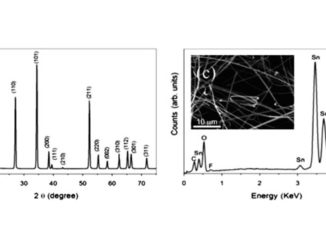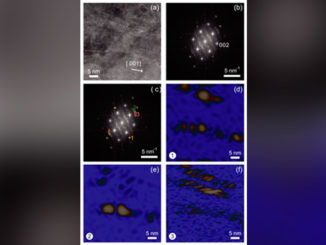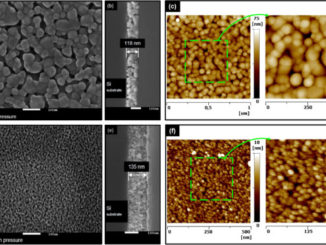
Writers: S. Parida; S.K. Rout; L.S. Cavalcante; A.Z. Simões; P.K. Barhai; N.C. Batista; E. Longo; M. Siu Li; S.K. Sharma
Keywords: Oxides; Defects; Crystal structure; Optical properties
Abstract: In this paper, Ba(ZrxTi1−x)O3 powders with different (x) compositions were synthesized by the solid state reaction method and their structure and improvement of photoluminescence (PL) properties with the Ti substitution by Zr were discussed. The structural investigation of these powders was performed by means of X-ray diffraction (XRD) and Fourier transform Raman (FT-Raman) spectroscopy. Their optical properties were monitored by ultraviolet–visible (UV–vis) absorption spectroscopy and PL measurements. XRD patterns indicated that the powders with x = 0 and 0.1 have a tetragonal structure while compositions with x ≥ 0.2 exhibit cubic structure. FT-Raman spectra revealed that the replacement of Ti by Zr significantly reduced the intensity of the Raman active modes. This behavior is related to the increase of undistorted [ZrO6] clusters in the global matrix at short range and decrease in local concentration of distorted octahedral [TiO6] clusters. UV–vis absorption spectra shown the presence of intermediary energy levels between the valence band (VB) and the conduction band (BC). These intermediary electronic levels are mainly related to 2p orbitals of O atoms, 4d orbitals of Zr atoms and 3d orbitals of Ti atoms between the VB and CB. A significant improvement in PL properties of Ba(ZrxTi1−x)O3 powders was observed with an increase of undistorted [ZrO6] clusters in the lattice. Finally, we propose possible wideband models based on intermediary energy deep and shallow levels to explain the PL behavior at room temperature.
DOI: 10.1016/j.matchemphys.2013.06.041




